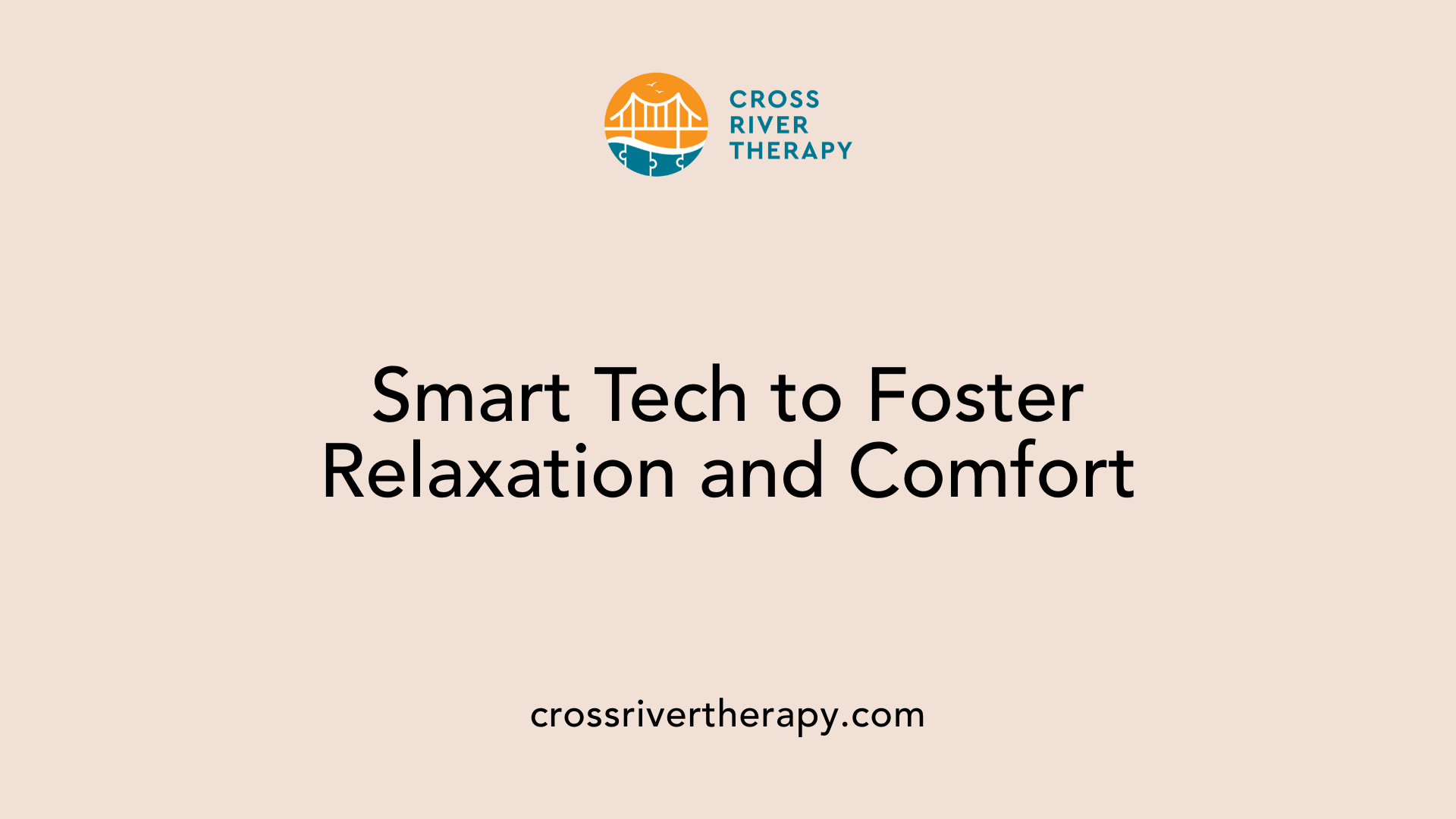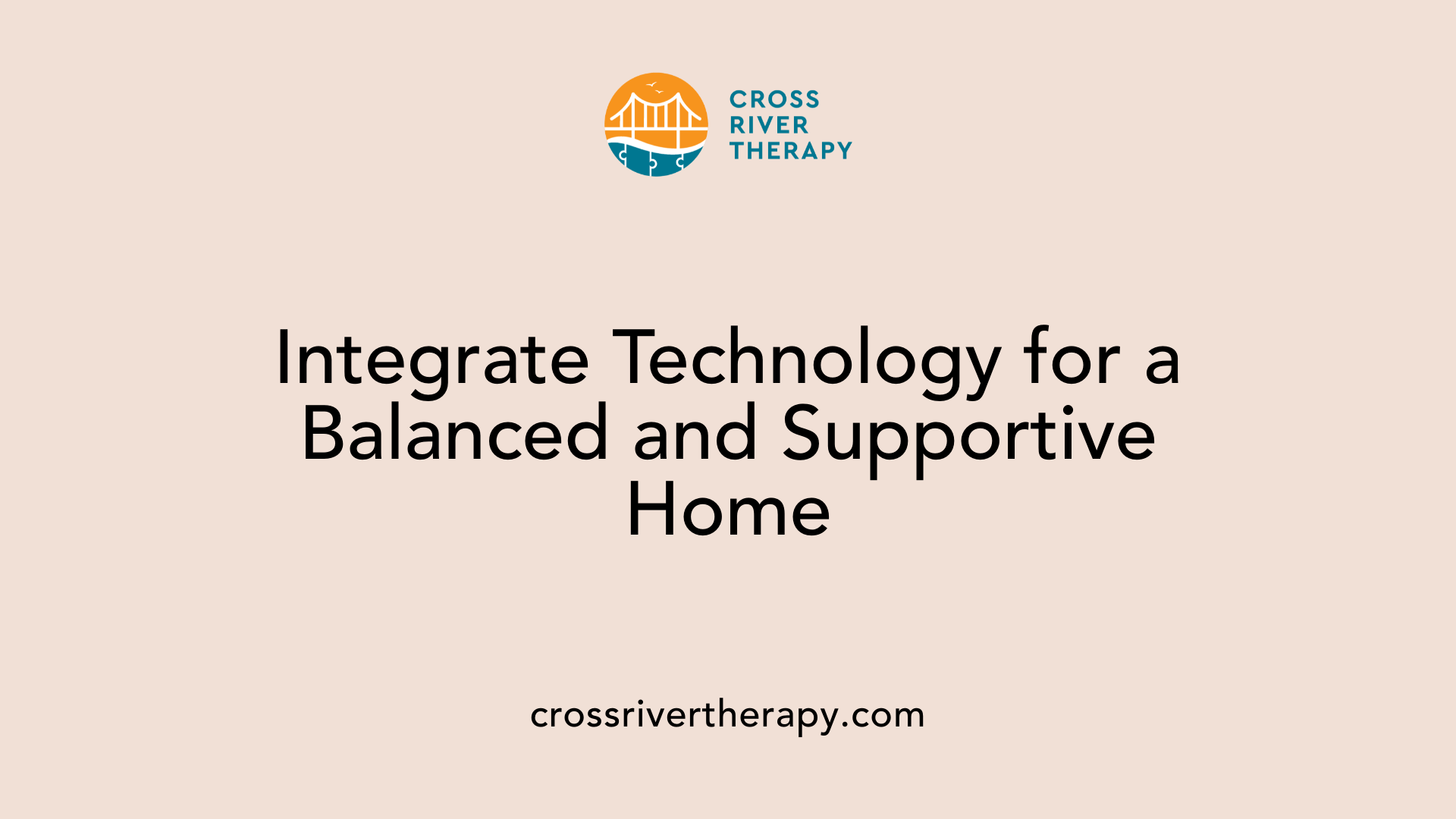Smart home tech for autism sensory needs
Harnessing Technology for Autism Sensory Support
An Introduction to Smart Home Solutions
For individuals with autism, the ability to control and tailor sensory environments can be a game-changer. Smart home technology provides novel approaches to addressing sensory sensitivities and supporting daily routines, thus enhancing the quality of life. This article explores how these technologies can cater to and fulfill the unique needs of individuals on the autism spectrum.
Customizable Sensory Controls

What are effective ways to create a sensory-friendly environment using smart home technology?
To create a sensory-friendly environment using smart home technology, consider implementing adjustable smart lighting systems that can change brightness and color to accommodate individual sensitivities to light. This is particularly helpful for individuals with autism, as constant bright lights can cause discomfort.
Integrating smart white noise machines provides another layer of sensory comfort. These devices can help mask overwhelming sounds for those who are hypersensitive to noise, creating a calming atmosphere.
Adjustable lighting systems
Smart lighting allows for significant customization. Users can program lights to dim during certain times of day, switch to calming colors, or mimic natural light conditions. Such adjustments can alleviate sensory overload and contribute to a soothing environment.
Smart thermostats for temperature control
Temperature sensitivity is a common challenge for many individuals on the autism spectrum. Smart thermostats can be calibrated for optimal temperature control, ensuring a comfortable climate tailored to personal preferences. They can even adjust automatically based on time of day or occupancy, maintaining a consistently pleasant setting.
White noise machines
White noise machines or smart speakers can be programmed to play soothing sounds or calming music tailored to the individual’s tastes. These auditory elements not only provide comfort but also support relaxation and concentration.
Additional sensory adaptive technologies
Moreover, smart home systems can be programmed to limit exposure to certain stimuli, facilitating a more controlled and comforting environment for individuals with sensory processing challenges. By leveraging these technologies, caregivers and individuals can create personalized spaces that enhance overall well-being.
Smart Technologies Promoting Relaxation

What are some specific technologies and features that support individuals with autism?
Individuals with autism can benefit significantly from various smart technologies tailored to their unique sensory needs. Here are some notable examples:
| Technology | Function | Benefit for Individuals with Autism |
|---|---|---|
| Smart Diffusers | Release soothing scents in the environment | Promote relaxation and reduce anxiety |
| Calming Visuals via Projectors | Show tranquil images or calming animations | Enhance the sensory-friendly atmosphere and aid in relaxation |
| Soothing Soundscapes | Manage sound levels with calming music or white noise | Create a peaceful environment and help regulate sensory input |
In addition to these technologies, smart speakers can play soothing music or provide reminders for daily activities, contributing to emotional regulation. Visual schedule apps can synchronize with home devices, assisting individuals in navigating their daily routines while maintaining structure.
Moreover, sensory-balancing tools, like vibrating furniture and adjustable lighting, can help in managing sensory overload, further enhancing the comfort and safety of the environment. Incorporating resources from occupational therapy together with these smart home solutions offers promising support for individuals on the autism spectrum.
Enhancing Daily Routines

How does smart home technology benefit individuals with autism?
Smart home technology offers invaluable support for individuals with autism by tailoring environments to meet their specific sensory needs and helping them manage daily routines. With customizable solutions, these technologies foster predictability and ease in navigating daily activities.
One prominent feature is routine management via smart assistants. These assistants can send reminders for daily tasks, from personal care to schedules for activities. This predictability plays a critical role in reducing anxiety, providing a structured framework for individuals who thrive on routine.
Additionally, visual schedule applications can present tasks in a clear and engaging way. These tools offer visual cues that help autistic individuals understand and navigate their day, enhancing their independence and confidence.
Interactive Technologies and Sensory Integration
Moreover, smart home technology can play a vital role in sensory integration. By combining interactive applications with sensory-friendly environments, these technologies create spaces that are not only calming but also engaging. For example, smart projectors can display soothing visuals, while smart diffusers release calming scents to enhance relaxation.
Incorporating these elements helps individuals process sensory information effectively, supporting therapeutic practices that promote well-being.
Overall Impact
The integration of smart home features not only enhances the daily experience of individuals with autism but also strengthens family connections. By establishing shared routines, families can cultivate a nurturing environment that promotes understanding and engagement.
In conclusion, these tools are not just conveniences; they are essential components in creating a supportive atmosphere that improves quality of life for individuals with autism.
Safety and Communication Innovations

Smart Locks and Security Systems
Smart home technology plays a crucial role in enhancing safety for individuals with autism. Smart locks allow for secure entry points that can be controlled remotely, providing peace of mind for caregivers. These locks can often be programmed with individual access codes, ensuring that only authorized personnel can enter. Additionally, monitoring systems enable real-time observation of the home environment, alerting caregivers to any unusual activity. This creates a safe space where individuals can explore their independence without compromising safety.
Smart Devices for Communication
For many individuals with autism, communication can be a challenge. Smart devices, equipped with voice recognition technology, enable easier interaction. These devices can respond to verbal commands, allowing users to control their environment hands-free, whether it’s adjusting lighting or playing soothing music.
Further, interactive applications can support learning and communication, providing visual aids to assist those with limited verbal abilities. This integration promotes not only safety but also encourages autonomy and better social connections through technology.
Overall, smart home innovations significantly improve both safety and communication, fostering a supportive environment for individuals on the autism spectrum.
Interactive Environments for Sensory Integration
How can smart home technology practically enhance the quality of life for autistic individuals?
Smart home technology offers a diverse range of customizable solutions designed to significantly enhance the daily lives of individuals with autism. By creating stable and supportive environments, these innovations address unique sensory needs effectively.
One essential feature is lighting control. Smart lighting systems can easily adjust brightness and colors, helping to create a sensory-friendly atmosphere that alleviates discomfort caused by harsh lights. Similarly, managing sound levels is crucial; smart speakers can provide calming music or gentle white noise, establishing a peaceful environment that caters to auditory sensitivities.
Temperature comfort is another critical area. Utilizing smart thermostats allows for temperature adjustments that can be automated according to individual preferences, ensuring a comfortable living space.
Further promoting relaxation, smart projectors can display calming visuals, while smart diffusers can release soothing scents, enhancing sensory spaces.
Routine management features integrated into smart home devices can offer verbal reminders for daily activities, reducing anxiety around transitions for autistic individuals. In addition, the safety enhancements provided by smart locks and surveillance systems afford peace of mind for families by ensuring a secure environment.
For those with limited verbal abilities, technology can simplify communication. Smart devices equipped with voice recognition allow for easier interactions and facilitate daily tasks. Finally, interactive applications designed for sensory integration therapy create engaging environments that help individuals process sensory information, actively contributing to their emotional development and independence.
| Feature | Description | Benefit |
|---|---|---|
| Lighting Control | Adjustable brightness and color | Reduces sensory discomfort from bright lights |
| Sound Management | Calming music or white noise | Establishes a peaceful atmosphere |
| Temperature Control | Smart thermostats for personalized climate settings | Ensures comfort in the living space |
| Calming Visuals | Smart projectors displaying relaxing images | Enhances sensory-friendly spaces |
| Smart Diffusers | Soothing scent release | Promotes relaxation |
| Routine Management | Reminders through smart assistants | Reduces anxiety during transitions |
| Safety Features | Smart locks and monitoring devices | Provides safety for individuals with autism |
| Communication Aids | Voice recognition technology | Eases interaction for individuals with limited speech |
| Sensory Integration Apps | Interactive environments for processing sensory information | Supports emotional development and independence |
These components collectively improve the daily interactions and overall quality of life for autistic individuals.
Advanced Tools for Emotional Well-being
Calming Music and Scent Diffusers
Smart home technology can transform the atmosphere for individuals with autism by introducing calming music and soothing scents. Smart speakers allow users to select relaxing playlists or calming white noise, helping to create a peaceful environment that can alleviate anxiety. Furthermore, smart diffusers can automatically release pleasant fragrances, such as lavender or chamomile, which are known for their stress-relieving properties.
Weighted Blankets and Sensory Rooms
Weighted blankets are another tool that can enhance emotional well-being. These blankets provide gentle pressure that can comfort individuals with autism, promoting a sense of safety and calm. Additionally, sensory rooms equipped with smart projectors and various tactile elements can engage multiple senses. Smart projectors can display tranquil images while integrated sound systems play calming sounds, creating a holistic environment that encourages relaxation and sensory exploration.
Creating a Balanced Home Environment

Integration of All Features to Enhance Well-Being
Smart home technology offers a variety of features that can be seamlessly integrated to create a supportive living environment for individuals with autism. This approach focuses on addressing sensory needs while enhancing daily life.
By combining different smart devices, like lighting controls and sound management systems, caregivers can create a sensory-friendly atmosphere that adapts to the person’s immediate comfort requirements. For instance, smart lighting can adjust its brightness and color, alleviating discomfort from harsh lights. Smart speakers can play calming music or white noise, further promoting a tranquil setting.
Customizable Smart Home Solutions
The beauty of smart home technology lies in its customizability. Systems can be programmed to maintain comfortable temperatures through automated adjustments via smart thermostats based on user preferences. Additionally, smart projectors can display calming visuals while smart diffusers release soothing scents, greatly enhancing the relaxation space.
Routine management is another essential feature. Smart assistants can offer reminders tailored to daily activities, reducing anxiety for individuals with autism by providing structured routines. Safety is also paramount, with devices like smart locks and surveillance cameras ensuring a secure environment. Finally, these technologies can aid communication, allowing individuals with limited verbal skills to interact more effectively through voice commands, supporting their social engagement and integration.
Smart Home Technology: A Step Forward
Incorporating smart home technology into daily life empowers individuals with autism and their families by creating environments that are both adaptable and comforting. From sensory-friendly lighting to smart safety devices, these technologies represent a significant advancement in enhancing the autonomy and quality of life for autistic individuals. As technology continues to evolve, the potential for further customized solutions to meet diverse needs grows, paving the way for more inclusive and supportive environments across various settings.
References
- How Smart Home Technology Can Support Sensory Needs For Autism
- 7 Ways to Create an Autism-Friendly Home for Your Child
- Sensory Issues - Autism Speaks
- Sensory processing disorder (SPD) - Autism Speaks
- Supporting sensory needs at school | Autism Speaks
- Adulting on the Spectrum: Exercise and sensory Issues
- How does sensory processing affect communication in kids with ...
- Sensory Issues - Autism Speaks
- Sensory processing disorder (SPD) - Autism Speaks
- Supporting sensory needs at school | Autism Speaks



